“Gentle giants” is a term that suits humpback whales to a T. Vocal, massive, and agile mammals, they give researchers an ample amount to study.
Due to the prevalence of drones, we’ve had the opportunity to watch the habits and movements of these spectacular beings, and they put on quite the show. Fortunately for us, they’re slow-moving and regularly breach (launch themselves out of the water), which provides whale watchers with one-of-a-kind visuals.
We’re here to provide in-depth answers to questions you have and some you haven’t thought of about the humpback whale. You’ll learn facts about their size, migration odysseys, and what their vocalizations mean.
Come along with us as we spout facts about one of the largest creatures on Earth. You’ll be glad you did.
10 Most Intriguing Facts About Humpback Whales
- Humpback whales derive their name from the notable hump on their backs
- Humpback whales can reach up to 60 feet in length and weigh around 40 tons
- Newborn humpbacks measure over 10-15 feet in length
- Humpback whales reside in major oceans, often migrating
- Each humpback whale travels a distance of up to 16,000 miles
- Humpback whales can live for 80 – 90 years
- Humpback whales don’t have teeth
- Humpbacks ingest up to 3,000 pounds of small fish and crustaceans daily
- Male humpback whales create songs with haunting, lengthy vocalizations
- The IUCN categorizes humpback whales as least concern (IUCN)
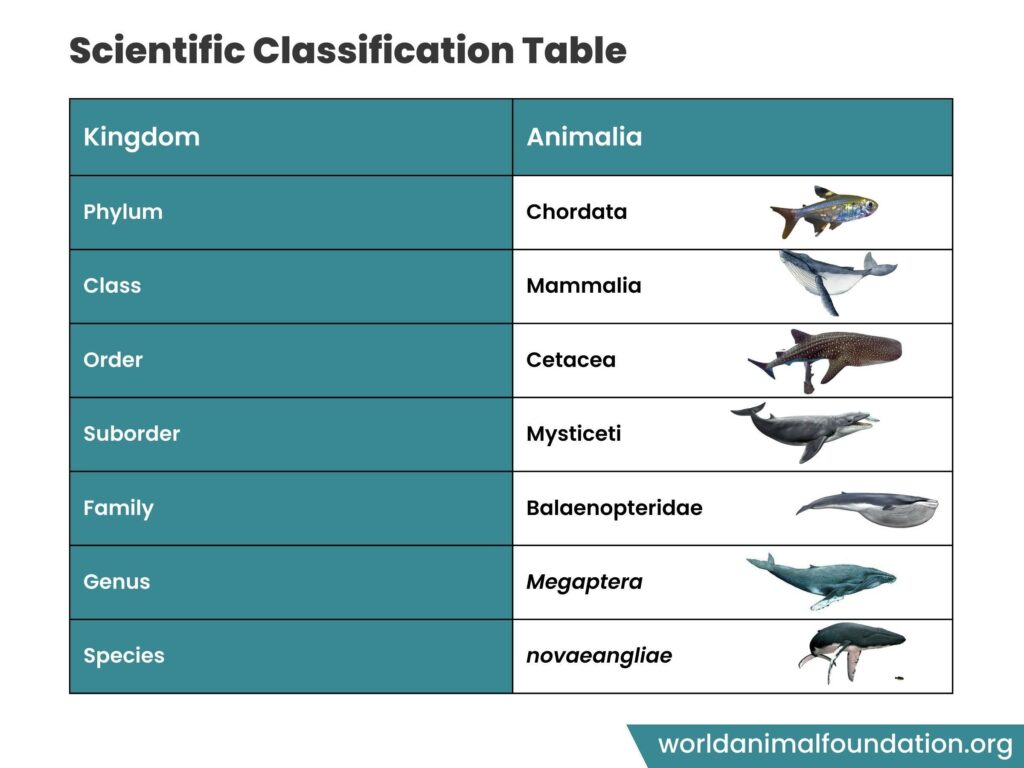
Humpback Whale Facts
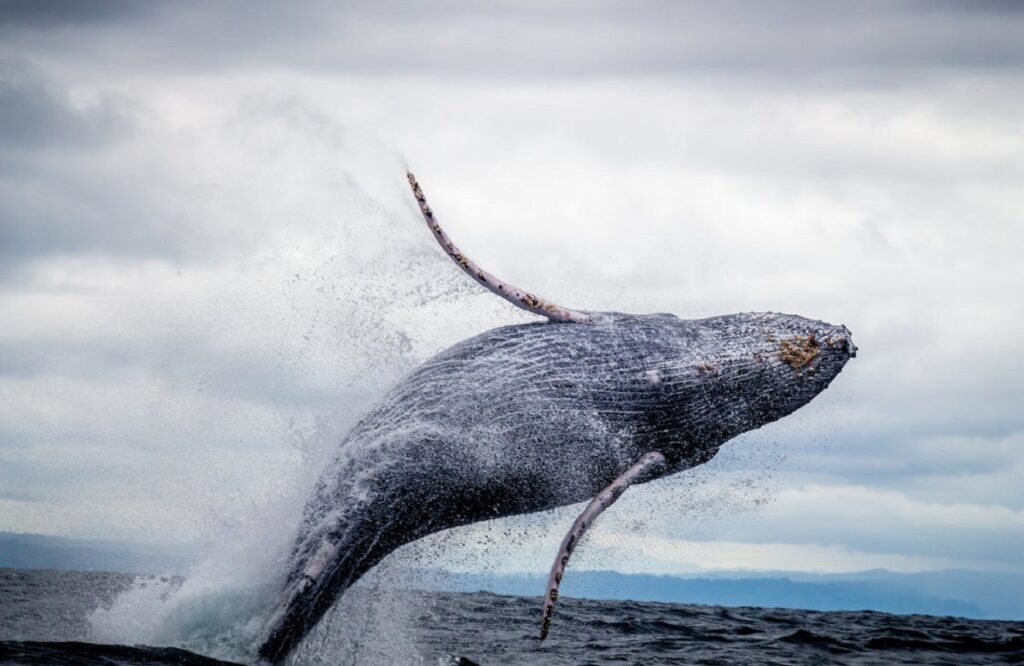
Let’s begin with some interesting tidbits about humpback whales just to dip our toes into the water:
- Since the early 17th century, humpback whales have frequented Bermuda, only one of their hangouts, and from the 17th-19th centuries, remained in that area from February to May. Today, they’re in that area only 3-4 weeks in March and April, which is also the whale watching season in Bermuda.
- Newborn humpback babies are called “calves” and don’t stop growing until they’re around 10 years old. They’re nursed for almost a year and build quite tight relationships with their mothers. Their young swim close by and even touch the mother.
- Humpback calves must consume around 99 lbs. of milk daily. (Just a bit different from human babes.) After they have nursed on the nutritious, fat-filled liquid, they have increased their weight by five times and doubled their length.
- If you’ve had the chance to see a breaching humpback whale, I’m jealous! But next, can you imagine seeing three of them at once? This man did.
- Although there aren’t detailed specifics about how climate change affects humpbacks, the world emergency certainly does. With the melting of ice coverage and changing water temperature and currents, these circumstances likely interfere with feeding ground locations and even mating and migration habits.
- Scientist Nan Hauser was saved by a humpback whale and was featured in a National Geographic documentary talking about it.
We still know little about what makes these whales tick, but let’s take a deep dive into what we know…for sure.
Humpback Whale Size

Humpback Whales Grow Up to 60 Feet in Length and Weigh Around 40 Tons. (NOAA)
Imagine the size of a bus, and you’ve got an image in your mind’s eye about the glorious mass of these whales. Yet as large as they are, and as many divers that have had personal interaction with them, there is no documentation that would lead us to believe they use their 40 tons weight as a weapon against humans.
Humpback Whale Tails Can Span Up to 18 Feet in Width. (PBS.org)
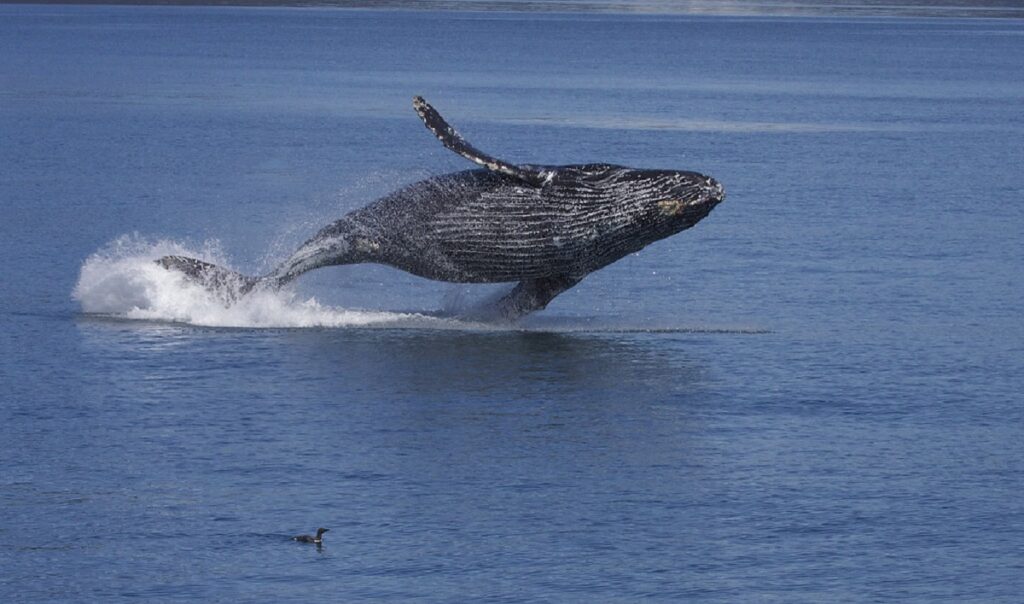
Now imagine a single-car garage door, and you have a humpback’s tail length. In other words, humongous. They use their unique tails (known as flukes) to:
- Maneuver
- Give warnings
- Stun prey
- Use as a weapon
- Communicate
One thing they do with their tails that has scientists scratching their heads is holding their tails up out of the water for long periods of time, called “tail sailing.” There are many hypotheses of why they do this odd behavior, but no definitive answers as of yet.
Newborn Humpbacks Measure Over 10–15 Feet in Length. (CILC.org)
Calves weigh up to 1 ton (907 kg), and the milk they get from their mother has a 45% to 60% fat content. (I know my child was born big, but not quite like this.)
Where Do Humpback Whales Live
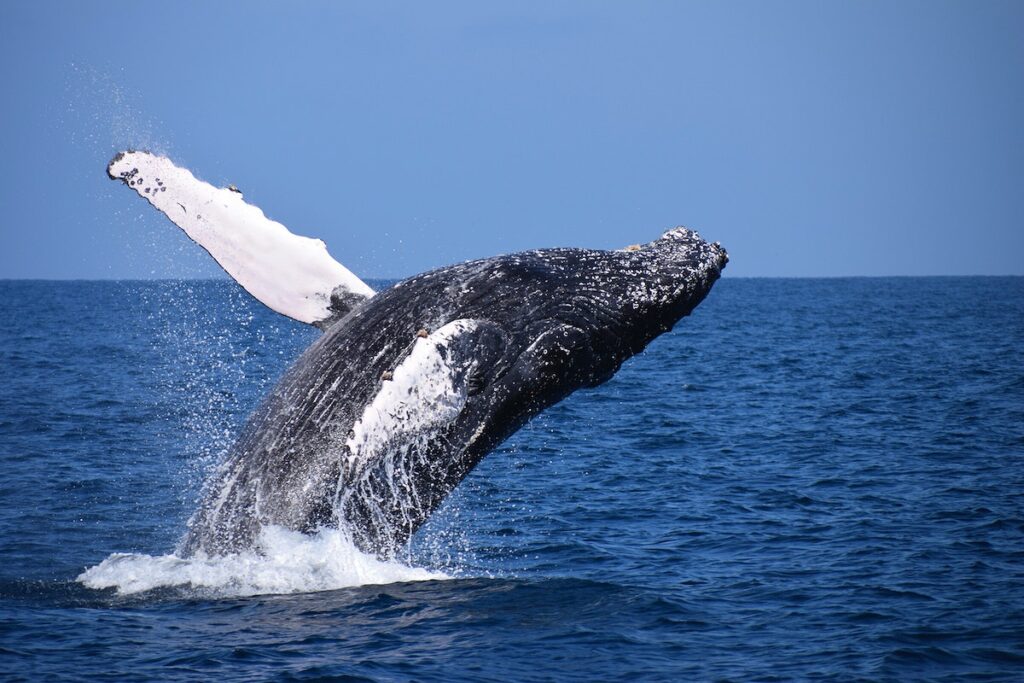
Humpback Whales Reside in Major Oceans, Often Migrating. (NOAA Fisheries)
Some humpbacks migrate 5,000 miles between summer feeding grounds and winter mating and birthing times. In the North Pacific, they show off, and some migrate 3,000 miles from Alaska to Hawaii in as little as 28 days.
Humpback Whales Migration
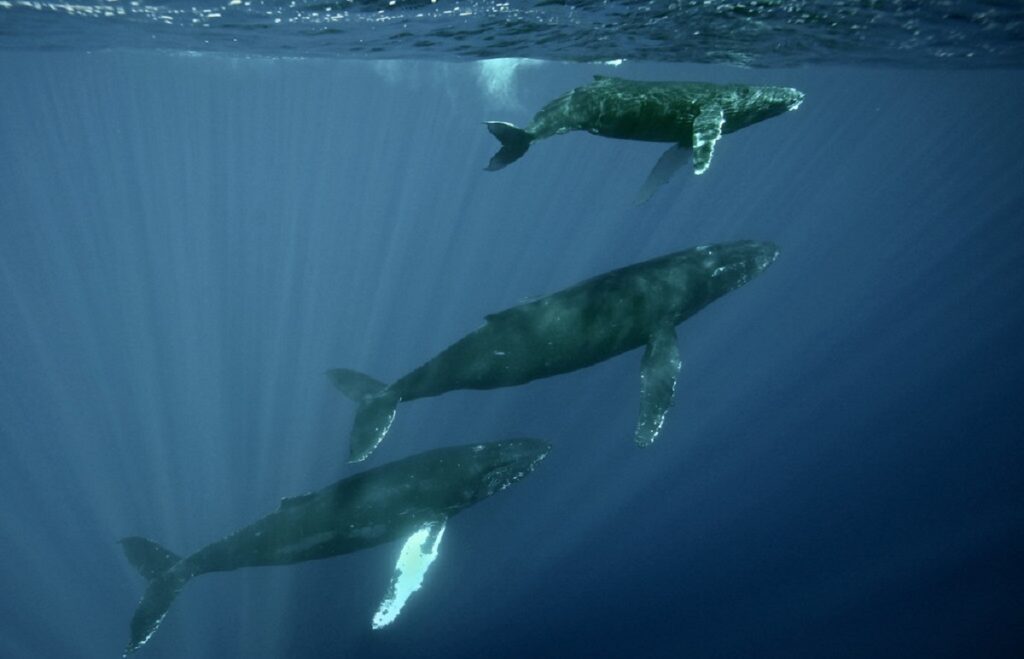
Each Humpback Whale Travels a Distance of Up to 16,000 Miles Between Feeding and Breeding Grounds. (Ocean.org)
This is an annual travel log. Too bad they can’t get frequent flyer miles. Migration trips have been observed, measured, and analyzed by scientists/researchers, so you can know numbers aren’t just being thrown around.
How Long Do Humpback Whales Live
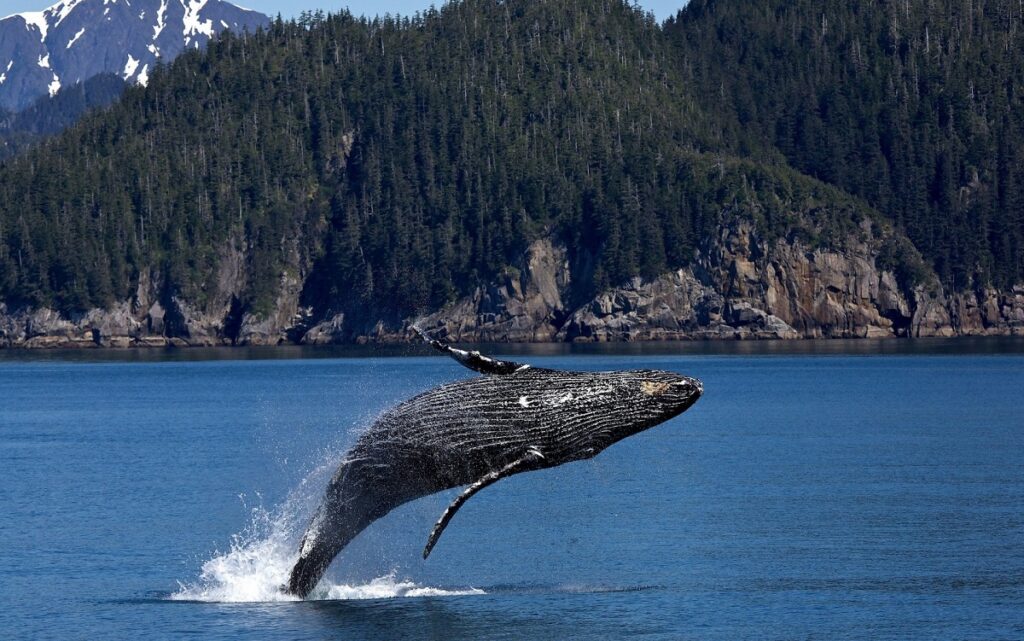
According to Ocean.org, Humpbacks Have a Lifespan of Around 48 Years. (Ocean.org)
And these years are generally predator-free since humpback whales are at the top of the food chain. Only killer whales are known to attack the calves. Moreover, In the 19th century, there were cases where two humpback whales were discovered dead near areas where repeated oceanic sub-bottom blasting had occurred.
Other Studies Suggest Humpback Whales Can Live for 80 – 90 Years. (NPS.gov)
This is almost double their minimum lifetime age, but taking the average, around 50, is safe to say. One famous humpback that had been closely watched was named Festus and lived in the Glacier Bay National Park and Preserve. He lived to be in his mid-60s.
What Do Humpback Whales Eat
Humpbacks Ingest Up to 3,000 Pounds of Small Fish and Crustaceans Daily. (NWF.org)
These whales are omnivores, which means they consume both plant and animal matter. Their method of eating, opening their humongous mouths to gather thousands of fish, plankton, and the like, is quite a spectacle. They, however, are known to consume very little to no food during migration and breeding seasons.
Their Prey Primarily Consists of Tiny Shrimp-Like Krill and Plankton, Along With Other Small Invertebrates. (American Oceans)
Humpbacks are opportunistic feeders. They aim and often ingest squid, octopus, and even small crustaceans.
Are Humpback Whales Dangerous
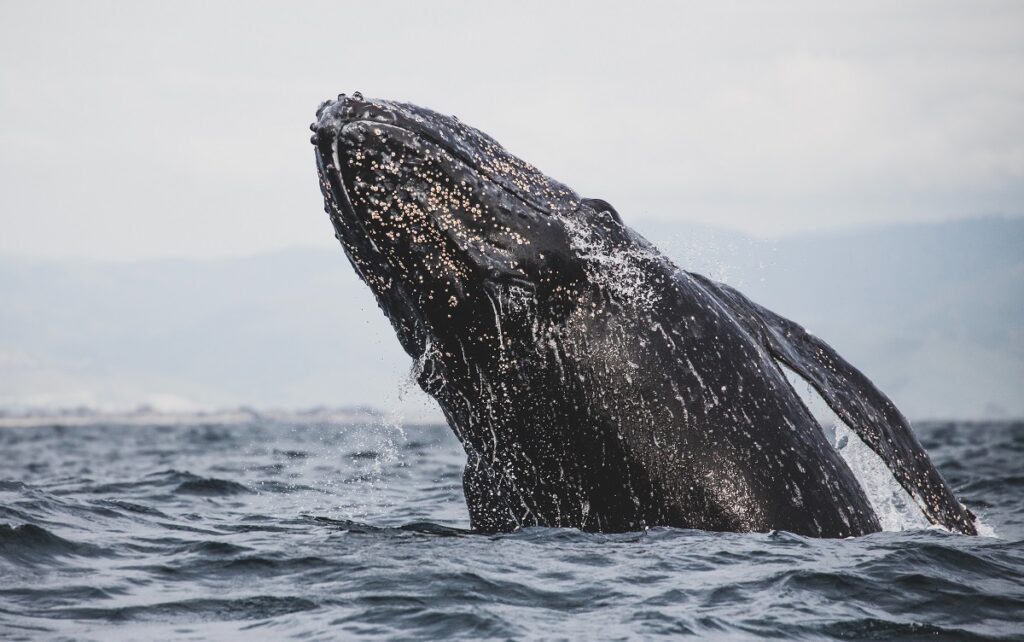
Humpback Whales Rarely Attack Humans, Only if They Perceive a Threat. (National Geographic)
They could kill us with the flick of a tail, but video after video and account after account tell the real story of the gentle giants. If the opposite were true, this video from National Geographic could have ended very differently.
Humpbacks Are Renowned for Rescuing Not Only Their Own Species but Other Species As Well. (Earth Sky)
In a scientific study, it was recognized that the following marine life have also been saved by humpback whales:
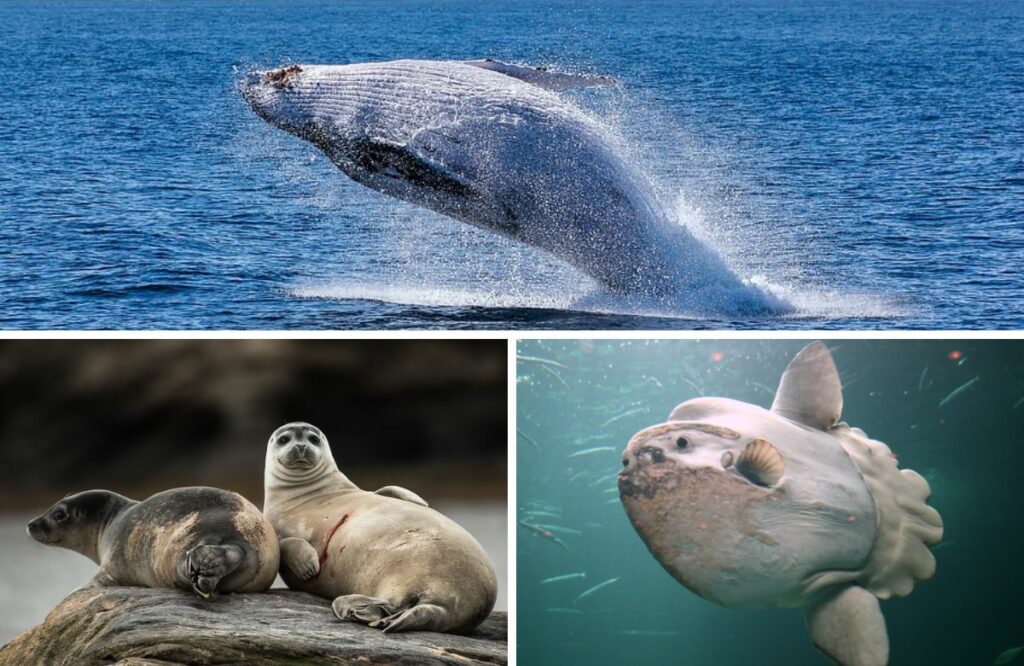
- Gray whales
- Ocean sunfish
- Harbor seals
- California sea lions
Humpback Whales Teeth

Humpback Whales Are Baleen Whales and, Therefore, Don’t Have Teeth. (WWF)
There are baleen whales and toothed whales. Humpbacks and blue whales have fibrous baleen plates in their mouths rather than teeth. This aids them in their eating style. Beluga, sperm, and orca whales are examples of toothed whales.
Humpback Whales Are Filter Feeders. (Westfield State University)
They gulp, alternatively swim, then repeat. Besides what we’ve mentioned before, some of the fish they eat are:
- Mackerel
- Capelin
- Sandeel
- Herring
Humpback Whale Scientific Name
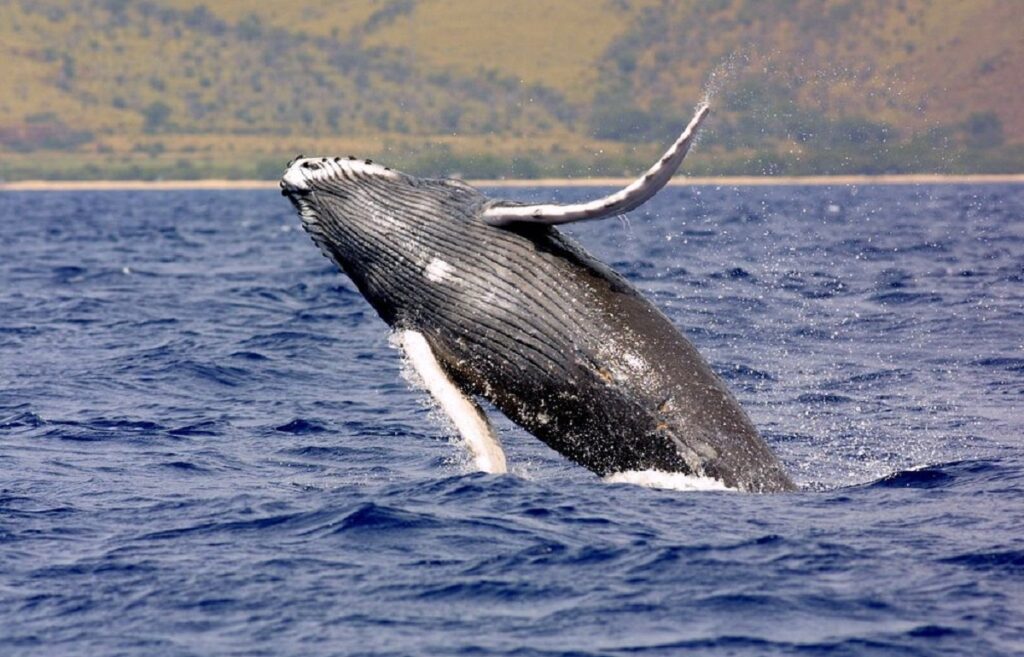
The scientific name for humpback whales is Megaptera novaeangliae. (National Geographic)
This fancy word means “Big wing of New England.”
- Kingdom: Animalia
- Phylum: Chordata
- Class: Mammalia
- Family: Balaenopteridae
- Order: Cetacea
Facts About Humpback Whales
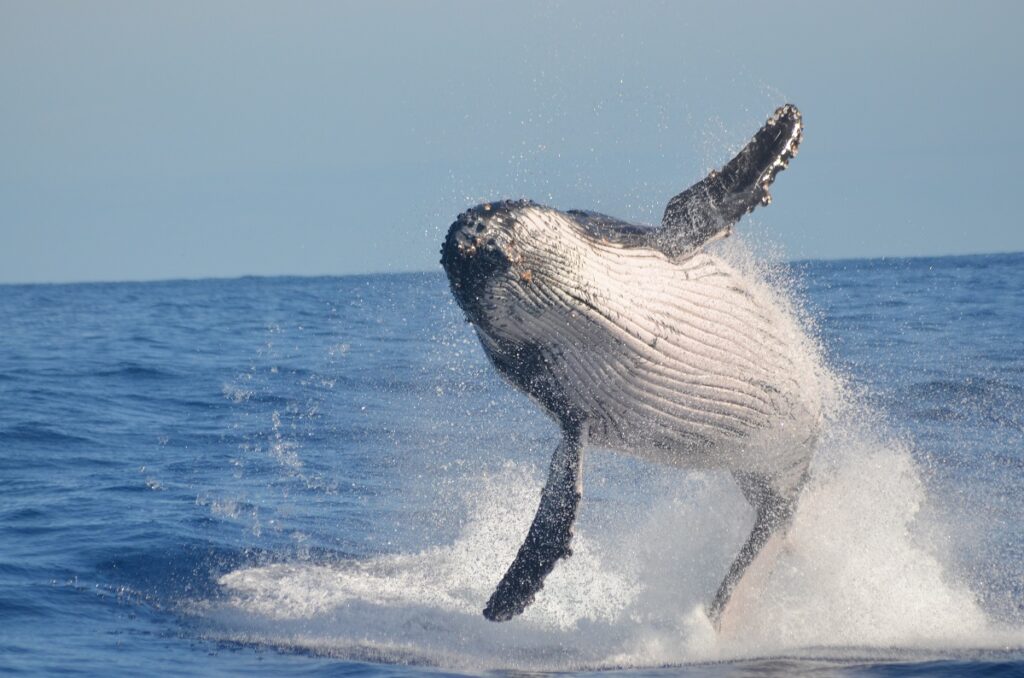
These gentle giants of the ocean have captured our hearts with their majestic presence and fascinating behaviors. Let’s look at some delightful facts about these incredible marine creatures:
Humpback Whales Derive Their Name From the Notable Hump on Their Backs. (NOAA Fisheries)
They’re primarily black but can have white on their pectoral fins, bellies, and the underside of their tails. There is a process called photo identification that has been used to catalog individual whales in order to track them.
There Are 14 Distinct Humpback Populations Worldwide. (NOAA Fisheries)
These are mapped out to recognize population segments of humpbacks worldwide. It’s fascinating that so much research has been done on them, yet they still hold mysteries.
Humpbacks Feature Tubercles on Heads and Fins, Each With Stiff Hair. (ACS)
These are bump-like knobs that contain at least one hair. There is no known purpose for this, only hypotheses such as it may give the whale the ability to detect movement. There are unique shapes and colors (patterns) on the humpback’s dorsal fin and tail that can identify them like fingerprints can a human being. How cool is that!
A 2011 Study Suggested Tubercles Cut Drag, Possibly Boosting Swimming and Maneuverability. (Integrative and Comparative Biology)
When you think about it, how do fish the size of a humpback have the maneuverability to catch much smaller prey? Their agility is surprising and something scientists research continually.
Female Humpbacks Give Birth to Calves Every 2–3 Years After a Year-Long Gestation Period. (ADFG)
They give birth to one calf. (Fortunately, the gestation period for human mothers is different.) Breeding season occurs during the winter months while they’re in tropical waters.
Male Humpback Whales Create Songs With Haunting, Lengthy Vocalizations. (NPR.org)
Biologist Katy Payne, with majors in music and biology, dissected whale vocalizations and realized they were songs that evolve. There was structure, rhythm, and pitch. If you get a chance to listen, humpbacks sing what could be called plaintive songs to our ears.
On a Breeding Ground, All Males Sing the Same Song. (NPR)
Only males sing humpback whale songs and in basically the same way. This practice is most probably to attract females. They eventually seem to change pitch, duration, and rhythm over time.
The IUCN Categorizes Humpback Whales As Least Concern. (IUCN)
AND their numbers seem to be increasing. Hallelujah! But this wasn’t always the case. There was a moratorium on commercial whaling in 1985 since their number was reduced by more than 95%. The United States listed all humpback whales as endangered under the Endangered Species Conservation Act in 1970 and then under the Endangered Species Act in 1973.
FAQs
How Big Are Humpback Whales?
Humpback whales can reach up to 60 feet in length and weigh around 40 tons.
What Does a Humpback Whale Look Like?
- Have a distinctive hump in front of its dorsal fin and on its back
- Long narrow flippers about ⅓ as long as their bodies
- Black or grey with white undersides to their flukes (tails), flippers, and bellies
- Pleats on their throats
What Eats Humpback Whales?
The Orcinus (translation: ‘of the kingdom of the dead’) orca whale is the only known species that has attacked and eaten juvenile humpback whales.
Are Humpback Whales Endangered?
Conservation status: The IUCN (International Union for Conservation of Nature) categorizes humpback whales as the least concern, and humpback whale populations are increasing in numbers.
How Many Humpback Whales Are There?
As of 2022, there were estimated to be around 84,000 mature individuals, with numbers increasing.
Conclusion
Although humpbacks are thriving today, the biggest threats to their survival are:
- Vessel collisions/strikes and pollution
- Entanglement in fishing gear
- Climate change
- Ocean pollution
We can’t expect these cool animals to be around forever with the number of ‘weapons’ in their way. Hopefully, awareness, education, and advocacy will ensure their safety from now on. We’re doing our best to get the word out about these awe-inspiring creatures. Won’t you join us?


